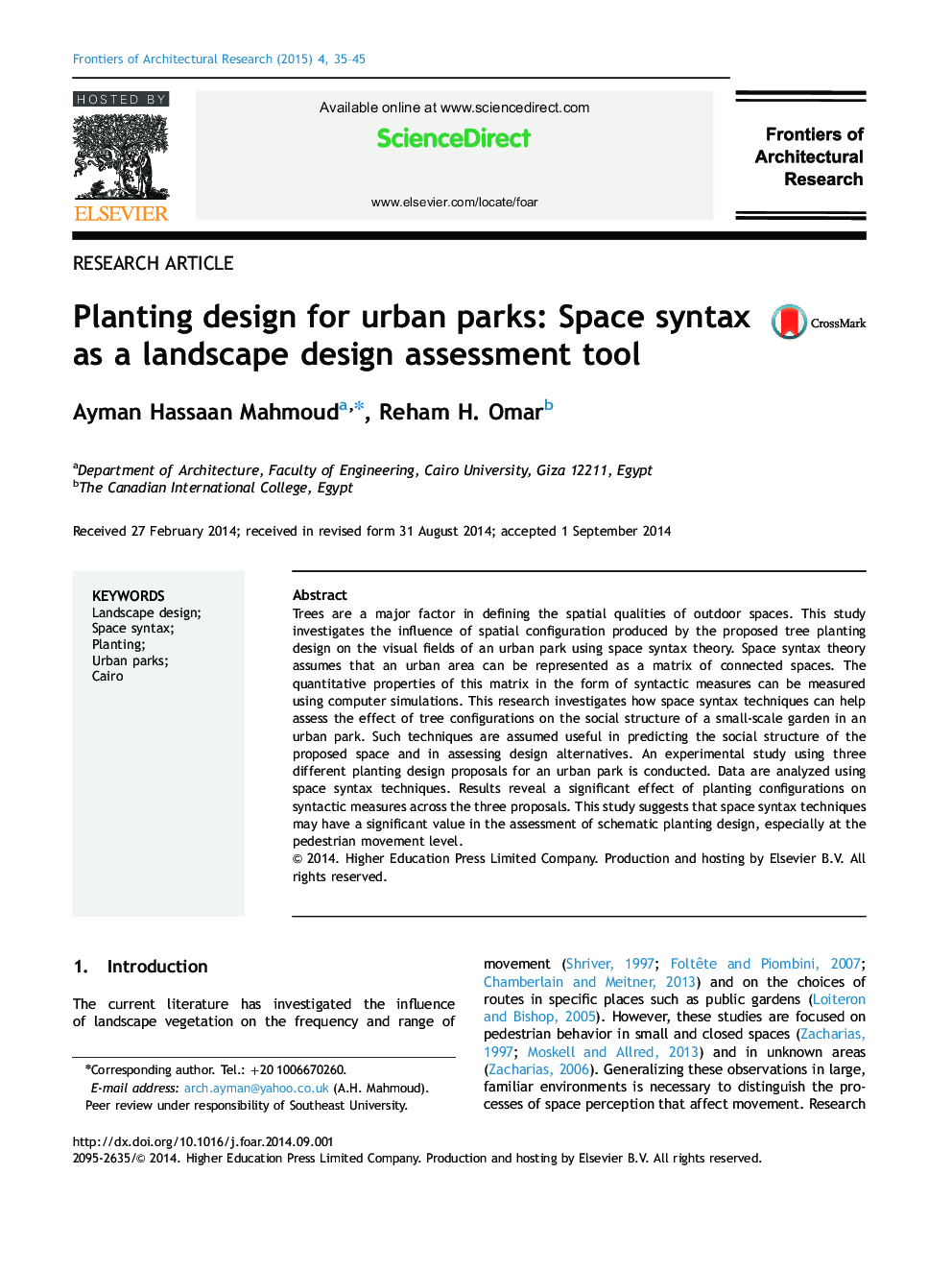| Article ID | Journal | Published Year | Pages | File Type |
|---|---|---|---|---|
| 270819 | Frontiers of Architectural Research | 2015 | 11 Pages |
Trees are a major factor in defining the spatial qualities of outdoor spaces. This study investigates the influence of spatial configuration produced by the proposed tree planting design on the visual fields of an urban park using space syntax theory. Space syntax theory assumes that an urban area can be represented as a matrix of connected spaces. The quantitative properties of this matrix in the form of syntactic measures can be measured using computer simulations. This research investigates how space syntax techniques can help assess the effect of tree configurations on the social structure of a small-scale garden in an urban park. Such techniques are assumed useful in predicting the social structure of the proposed space and in assessing design alternatives. An experimental study using three different planting design proposals for an urban park is conducted. Data are analyzed using space syntax techniques. Results reveal a significant effect of planting configurations on syntactic measures across the three proposals. This study suggests that space syntax techniques may have a significant value in the assessment of schematic planting design, especially at the pedestrian movement level.
